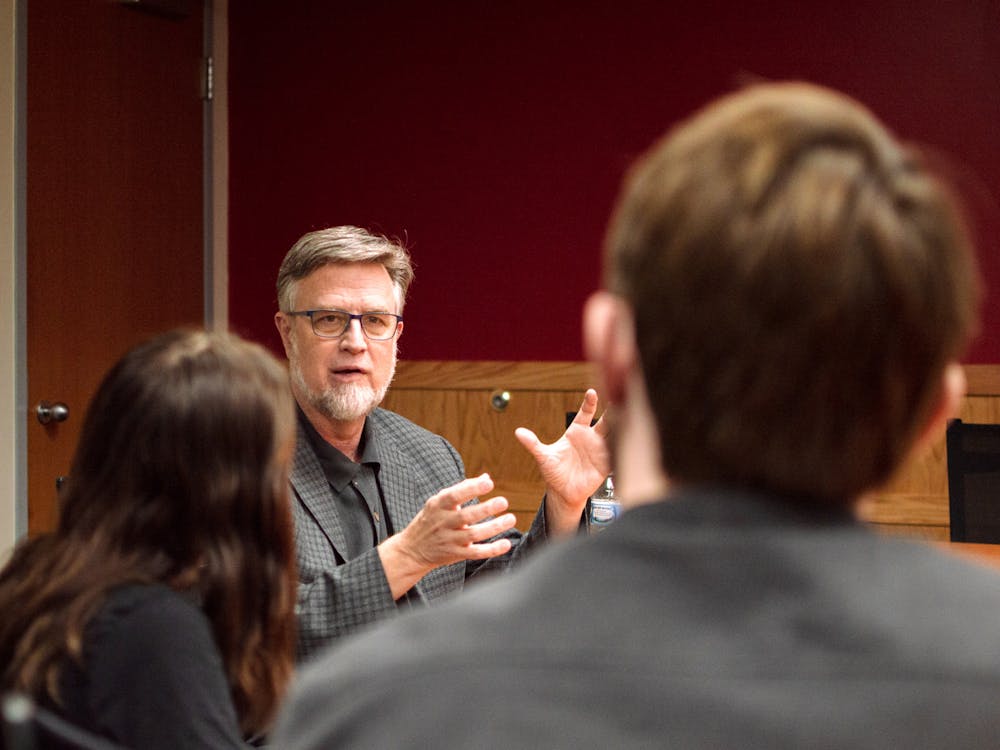By Libby Mueller, Senior Staff Writer
When students receive their Bursar bills, some wonder what each of the student fee charges are and where exactly that money goes.
Senior Thomas Brown said he believes Miami University does a good job structuring the Bursar system so students can easily pay their fees in one place and see what they are paying for. However, he said Miami could be more transparent on the bills about the breakdown of the fees.
"All we see on our Bursar bill is the charge," Brown said. "Maybe it's a transit fee or a business school surcharge fee. However, I don't really understand exactly where that money goes. I would either like to see it on the bill or on a webpage link that shows a list of the fees and does a breakdown of exactly where those fees go."
David Creamer is the vice president for Finance and Business Services and treasurer of the university. He said there are resources available to see the specifics of the fee breakdown, but agreed they are not always obvious to students.
According to Creamer, much of the reason the fees are not broken down for students in a more accessible way is simply the difficulty of constantly publishing the information. However, it is available in the budget.
The Miami University 2014-2015 General Fee Budget reports that a student on the Oxford campus pays $1,860 per academic year in general fees. The majority of these fees go toward Intercollegiate Athletics ($997). The next highest fee is paid toward the operation and use of the Recreational Sports Center (REC) and then the Goggin Ice Center.
Creamer said students pay fees for non-academic services and activities because the state does not provide any funding for them.
"It goes back to the 1960s," Creamer said. "The General Assembly, when it set out to define how it would fund public universities in Ohio, focused its dollars on the delivery of the educational activity and institution and the things that were specific to student life were set aside."
Therefore, students pay for activities outside of academics, such as the use of the Student Health Services Center, athletics and the money Associated Student Government (ASG) allocates to student organizations. All of these are included in the general fee.
Besides the general fee, students also pay a technology fee. For on-campus students, this fee amounts to $228 per academic year and for off-campus students, it is $336. Creamer said there is a separate committee that oversees those funds and directs them where they are most needed. The use of the funds varies year to year depending on the technology initiatives the university believes would best benefit all students.
"As usual with a dedicated fee, those funds are separately tracked and there's a committee that allocates the technology fee toward priorities," Creamer said. "That committee includes student representation. They look at today's needs, and those are always changing. The technology proposals that go through the committee tend to have general application across all academic areas."
Enjoy what you're reading?
Signup for our newsletter
In addition to the technology fee, students now pay the Armstrong Student Center fee. This fee has two parts: the general operating cost, which is about $82 of the $220 yearly fee and the long-term debt repayment, which will be charged to students over the course of about 25 years.
"The Armstrong fee was created as a result of a recommendation from ASG because the Armstrong project was not moving forward," Creamer said. "ASG put forward a fee proposal to pay for half of the cost of constructing the building. The financing is over a very long period of time. There will still be the operating portion of the fee [after the debt is repaid], but the portion dedicated to the construction part of the fee will be dropped."
Students often pay a surcharge fee for their courses as well. These funds must be used for the purposes stated in course descriptions.
"Surcharge fees go back to that particular department. They are segregated and must be used for the purpose outlined in the course description," Creamer said. "So if you're in an art class and there's a fee for materials, they can only be used for the purchase of materials for that art class."
Creamer said all of the fees are separated into strictly defined buckets to ensure they are only being used for the purposes for which they were originally intended.
Other fees students pay include the facilities fee. These funds go toward the repayment of debt from the construction of a facility in the past. Creamer said the borrowing period is usually over 20 or 25 years, as seen with the case of Armstrong, and the fee is charged for the eventual retirement of the debt.
Senior Mary Mathews said she thinks MU's Bursar system is fairly transparent when it comes to viewing costs. But she said she also would like to know more about the specific breakdown of the fees she pays.
"They do a good job breaking it down on Bursar," she said. "I like how you can see the dates of charges and where they're going. It would be nice, however, if they explained it and broke it down a little more."




